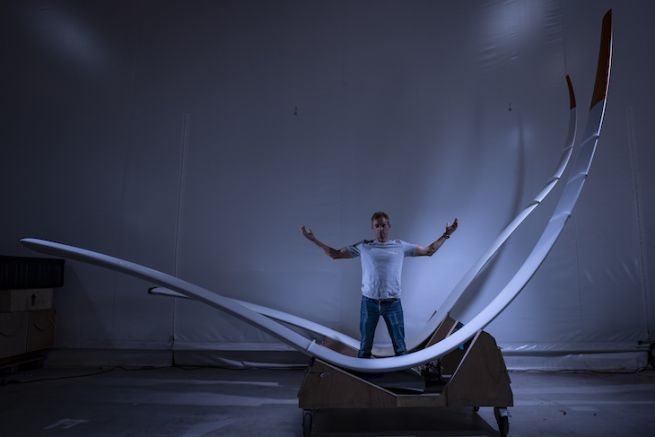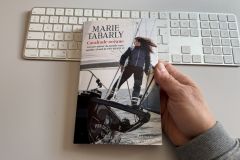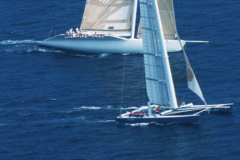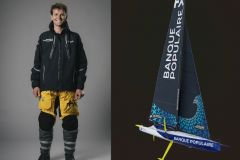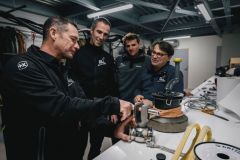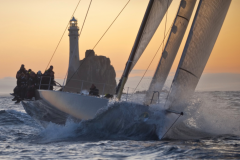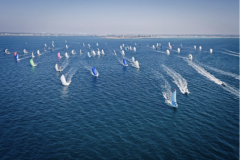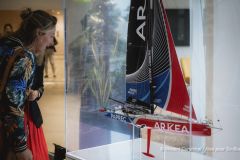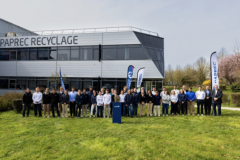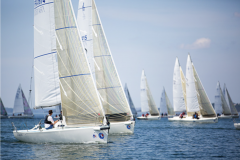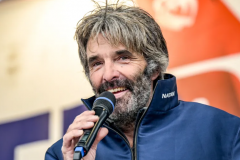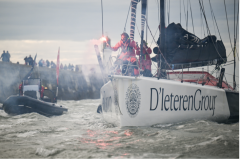Reliable and stable flight thanks to new foils
It was in Finistère that Thomas Ruyant was able to test these new foils, in the company of Antoine Koch, designer with Guillaume Verdier's firm of these new load-bearing appendages. In a variety of wind and sea conditions, the IMOCA LinkedOut proved that it was ready to face the different conditions of the Vendée Globe.
The objective of these 48 hours was to make the boat's "flying" mode more reliable and stable. Thanks to her new foils, the boat is starting to fly earlier, but above all she is keeping this flying mode for longer, especially in the wind range that the skipper will encounter in the Vendée Globe.
If the boat is not more comfortable, because it still hits a lot, its flight is more linear and stable, with much less stalling and therefore a high average speed for longer.
"Our new foils called V.2 are longer, thicker, but also simpler to build than the first version", explains Antoine Koch, naval engineer, sailor, involved with TR Racing in the development of sails and appendages. "This second set of foils was planned from the outset because the importance of these load-bearing appendages on the latest generation Imoca boats is such that it is inconceivable not to have a spare set. This first version was performing well at certain times, but it "stalled" a lot, meaning that the boat became unstable, subject to buffet stops in the waves, creating a level of demand and discomfort that was difficult to bear over time. Our second version definitely makes us more stable."
The skipper was therefore able to test his foils for 48 hours in sustained and varied wind conditions. "We're taking off much sooner than before, and many of our direct competitors." pursues Antoine. "In 15 to 20 knots of wind, on flat seas, the turbo effect is phenomenal. The boat has proved to be ultra-fast at reaching speeds, in 15 to 25 knots of wind. Thomas handled the foils perfectly, with calm and method. His trajectories were clear and his strategy excellent. We were able to sail in new conditions for the boat, up to 45 knots of wind downwind. This very unstable breeze in strength, which sometimes dropped below 15 knots, made it difficult to find the right combination of sails. But it was very instructive and as we got to know the boat in these sustained conditions, we identified some areas for improvement in sail play."
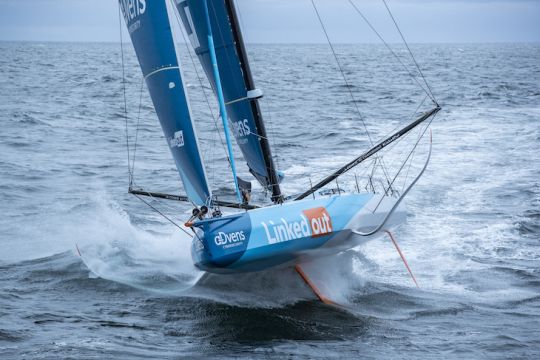
A reliable and fast boat
"The difficulty, but it's common to all foilers, is to lift your foot, slow down to go to sleep." says Antoine. "You're going to have to get used to living at very high speeds for a long time. I'm thinking here of the descent of the Atlantic, which will be crucial during this Vendée Globe. Thanks to our appropriate sail choices, LinkedOut is performing well in all points of sail, except perhaps in the very light airs, where our foils and wide hull will penalise us. But on a Vendée Globe, it is a configuration rarely encountered. In any case, it is neither the boat's time, nor that of Thomas, who is a Ministe at heart and crazy about speed. We have made choices from attaquants?! Finally, we have done a lot of work on the reliability of the electronic and computer systems on board. Shocks, permanent humidity, vibrations and speed are parameters that need to be mastered. But this is true for all boats."
